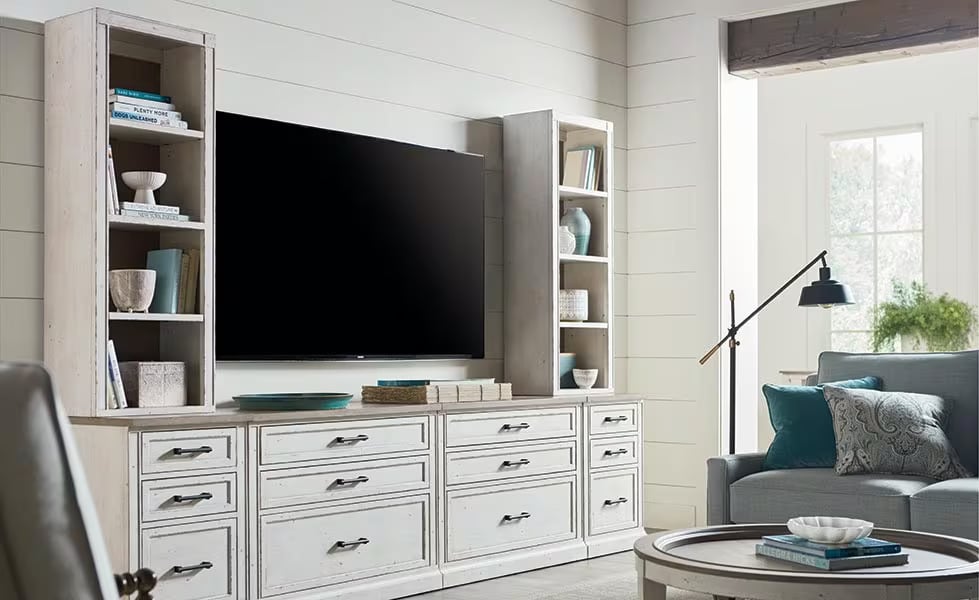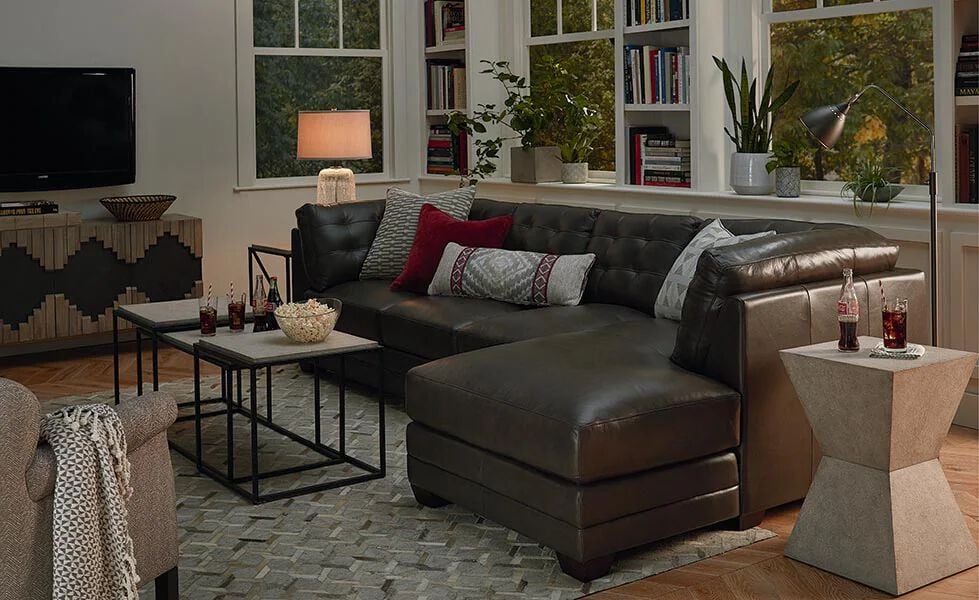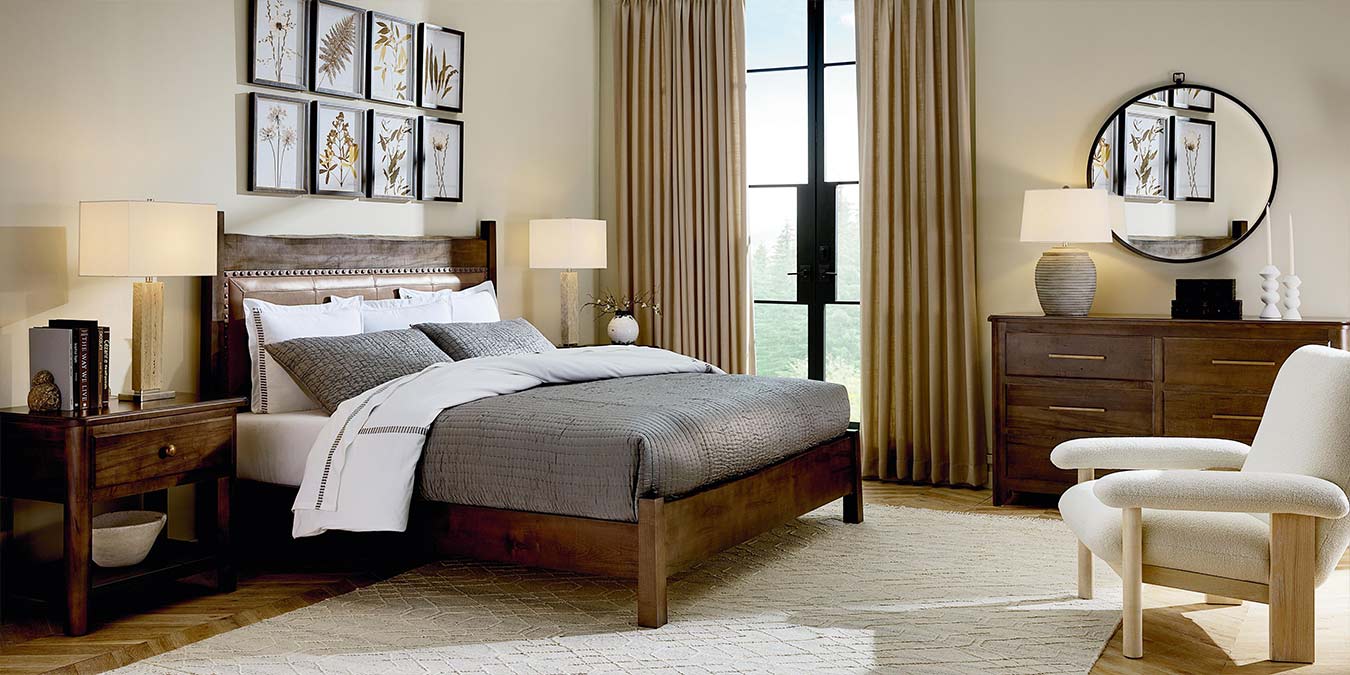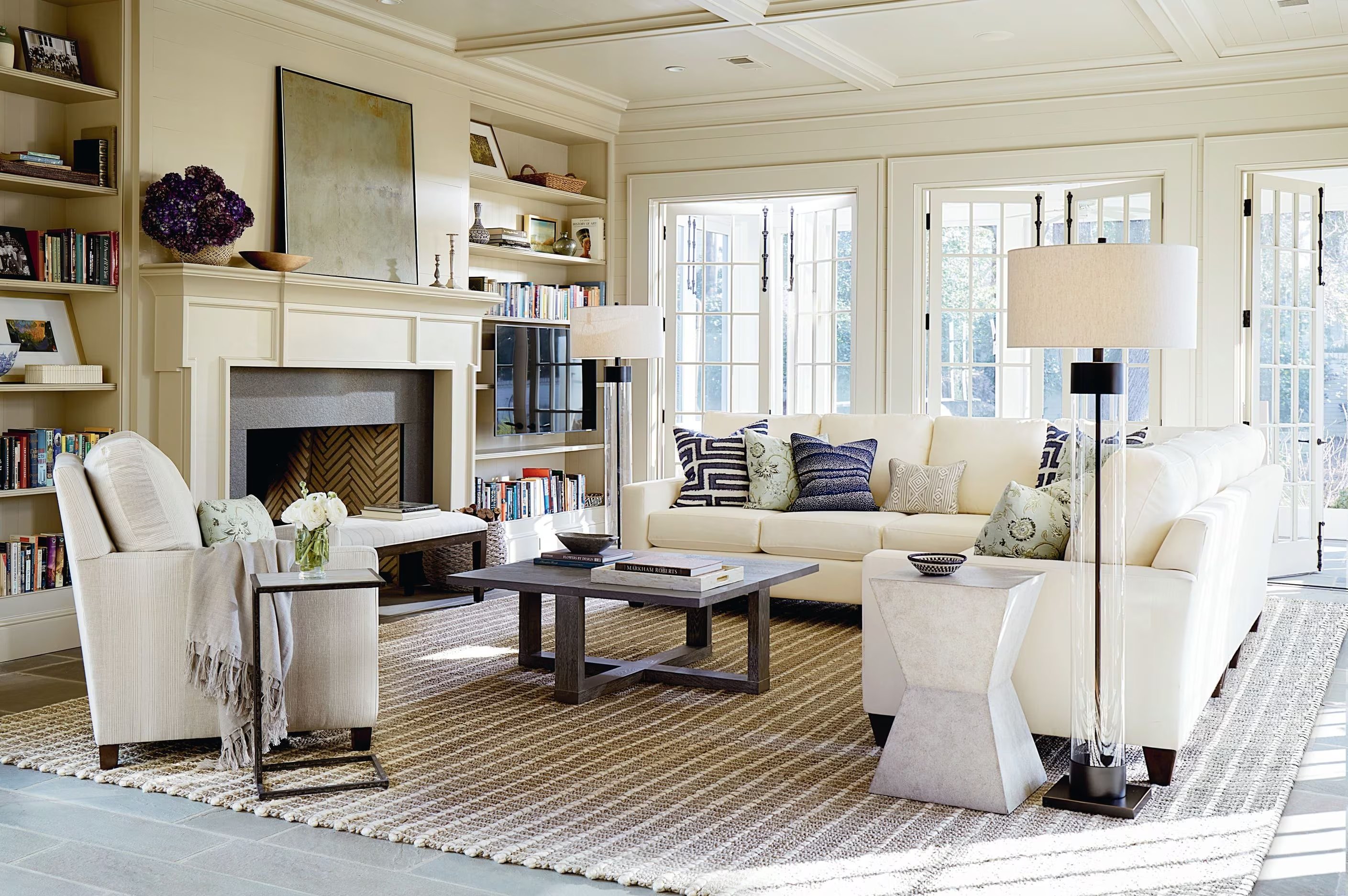TV Placement Tips
Updated 2/1/23

Whether you've just moved into a new home or are rearranging your furniture, one of the many questions you may ask yourself is, "Where should I put my TV?" A tv in sitting room or a television in living room? What's best? As televisions become bigger, wider, and even curvier than their technological ancestors, it's become increasingly difficult to find the perfect position for them.
But fret not! We've compiled some considerations to help you determine the best placement for man's greatest invention in your home.
Where to Put a TV in the Living Room
When deciding where to put TV in living room, the logical place is across from a sofa. You can use swivel chairs on each side of the sofa if you would like to allow two arrangements – one for conversation, and another where everyone wants to see the TV. So the tv placement in living rooms can be a hard choice.
The TV is a focal point as much as the fireplace or the picture window is. So, where to put the tv in a living room is an important question. Having two focal points can work just fine, because usually, only one focal point is drawing most of the attention at any given time – the crackling fireplace, the beautiful outdoor view, or the big game on the TV. If you can, avoid putting the television over the fireplace, since it will usually be too high on the wall. Depending on the room, you may be able to place it on a credenza catty-corner from the fireplace. Below are some things to consider when placing a TV.
Things to consider when placing a TV
Below are three factors to consider when placing a TV:
1. The Room
Pay attention to the layout of your room. Which walls are the windows and doors located in? Ideally, you'll want to place your television away from high-traffic areas and at an angle where sunlight from the windows won't cause a glare on your screen. Feel free to experiment with placement before finding studs and punching holes in your wall.
2. The Furniture
Do you want your television to be the focal point of your room, or humbly honor it on the side? The way you arrange your furniture can make it so your guests and family are encouraged to watch what's on the television by facing the chairs toward the screen or to engage in conversation by facing the chairs toward each other with the television catty-corner to the sofa.
3. The Television
As previously mentioned, TVs these days aren't the size they used to be. With 3D-TVs entering a home near you, you've got to make space for the next best thing. The size of your television can greatly help you determine the best location for it, whether it be in the middle of an entertainment center or hanging above the roaring fireplace.
You may also want to make sure that your TV placement won't affect your viewing. For example, LCD TVs can appear blurry if you aren't looking straight at them, so be sure that you can perfectly watch TV from every angle (or at least from every seat in the room).
How Big Should My TV Be? What Is the Best TV Viewing Distance?
How big your TV should be and how far it should be from the sofa are really two sides of the same coin. In general, the trend these days is to err on the side of a larger TV. Especially with high definition technology, people seldom notice that the TV is too large, but definitely notice if the scale is too small.
That said, televisions do come in sizes that correspond to a reasonable TV viewing distance:
• 26" screen = 3 to 5.5 feet
• 32" screen = 4 to 6.5 feet
• 37" screen = 4.5 to 7.5 feet
• 40" screen = 5 to 8.5 feet
• 46" screen = 6 to 9.5 feet
• 52" screen = 6.5 to 11 feet
• 58" screen = 7 to 12 feet
• 65" screen = 8 to 13.5 feet
• 70" screen = 9 to 15 feet
If it’s easier, just remember this general rule of thumb: the recommended distance for viewing is 2.5 times the diagonal length of the TV.
With high definition TVs, 1.5 times the length of the TV might be more appropriate.

Should I Mount My TV or Put It on a Stand?
Gone are the days when a giant television came in its own furniture cabinet, or when the entertainment center dominated the room because the TV was the size of a stove. Good riddance! Thanks to flat screens, you can usually find space on a wall that is strong enough for TV wall mounting. Setting it on a credenza or console is an option that still ensures both storage space and flexibility, and provides an elegant solution for hiding all those cords and wires. Modern credenzas have baskets, drawers, and shelving to help camouflage media components like your Firestick or BluRay player, as well as games, movies, and remotes. Even if you decide that TV wall mounting is the way to go, you can still use a console underneath for a finished look.
Top Ideas for Different Types of TV Stands
The following are some of the most common types of TV stands (or entertainment centers) you can incorporate into your family room or living area:
• TV stand or TV console
• Armoire
• Wall unit entertainment center
• Media chests
Entertainment Center Types by Style
If you're looking for a more modern TV stand, look for furniture pieces with distinct, clear lines. Contemporary media consoles or wall unit entertainment centers are typically identified by metal or glass materials, and more traditional entertainment centers are generally made of wood.
Consider how the material and finish (distressed paint, etc.) fits with your style preferences before choosing a piece of furniture that is the focal point of your room.
For those who do not want to mount the television to the wall, a credenza would be a perfect alternative. Credenzas are smaller than entertainment walls and offer a little more flexibility in the placement, but either could be the new home for your television.
TV Wall Mounting – Where Is the Sweet Spot?
Whether you decide to set the TV on a console or mount it on the wall, the best height for a TV is actually the same – eye level for a person sitting on the sofa. In general, that means the center of the TV should be about 42” above the floor, regardless of the size of the TV.
How high to put a TV on the wall is a little different if you are mounting it, say, behind a bar where most people will be viewing it from bar height stools, or in a kitchen where people will be standing while watching it. The goal is that the viewer can relax without worrying about neck strain.
Your Television, Your Home, Your Style
At Bassett Furniture, we want to help you fall in love with your house. From furnishing to design ideas, our design consultants can create the perfect oasis in any room of your home. For style ideas, visit your nearest Bassett location to speak with a local design consultant today!

